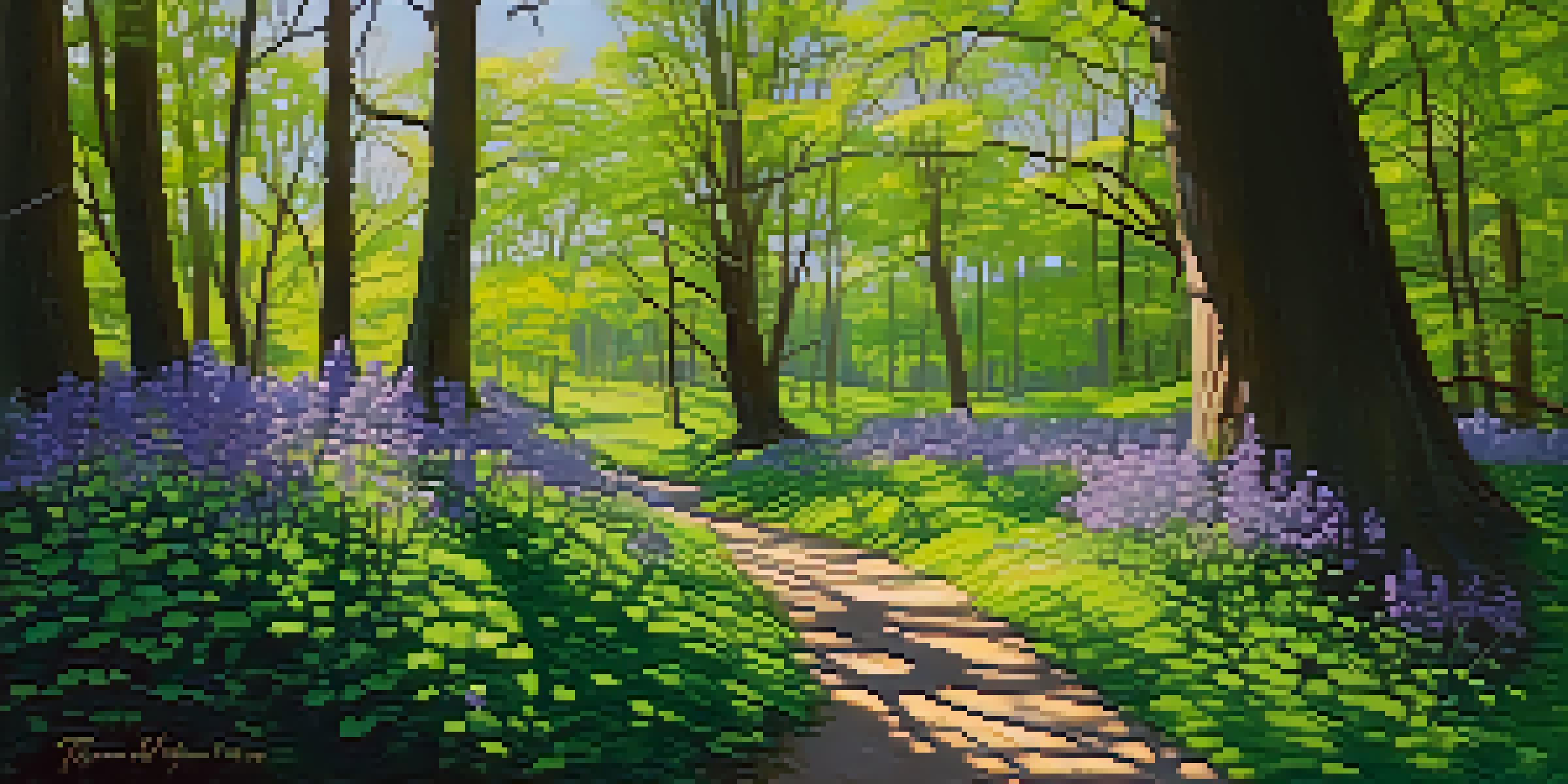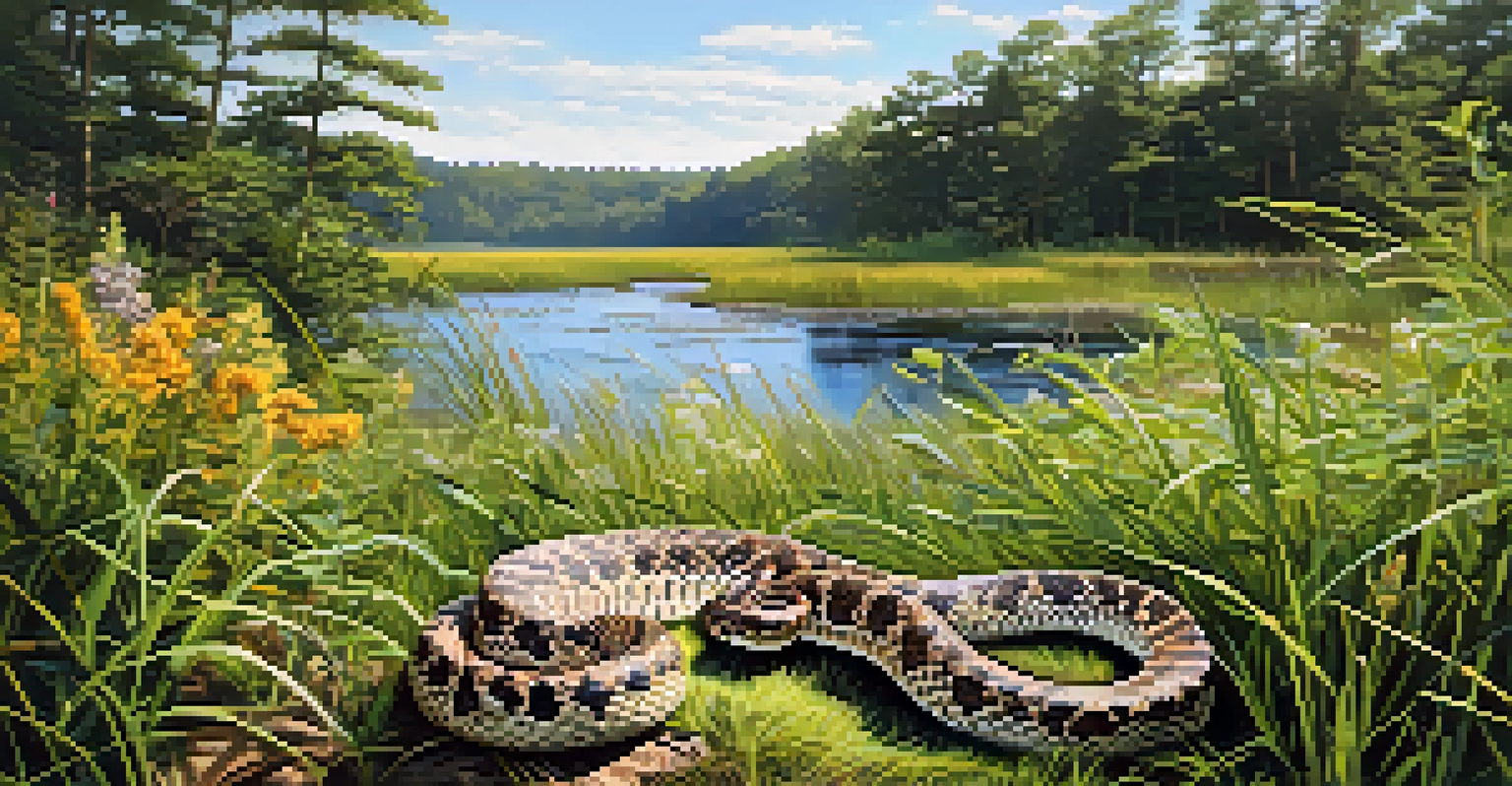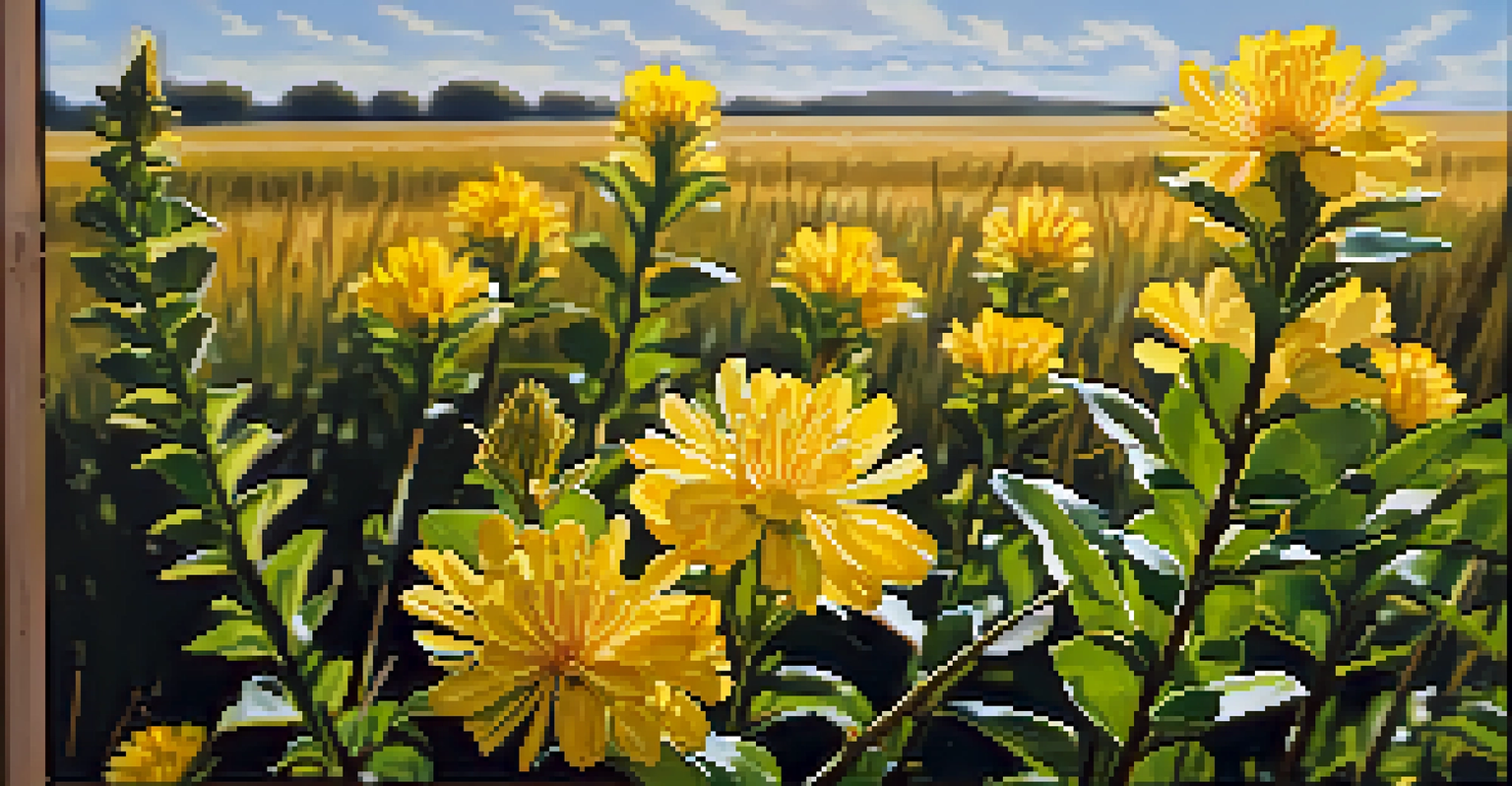Unique Flora and Fauna: Nature's Treasures in Illinois Parks

The Rich Biodiversity of Illinois Parks
Illinois parks are home to a remarkable variety of plant and animal species, reflecting the state's diverse ecosystems. From lush forests to sprawling prairies, these habitats offer a glimpse into nature's intricate web of life. The state's unique geographical features create a perfect environment for this rich biodiversity.
In every walk with nature one receives far more than he seeks.
Many parks, such as Starved Rock and Shawnee National Forest, showcase native species that thrive in their specific environments. For instance, visitors can encounter the striking Illinois state flower, the violet, amidst the stunning scenery. This blend of flora and fauna not only adds beauty but also plays a critical role in maintaining ecological balance.
Understanding the diverse life forms in these parks enhances our appreciation for nature. By exploring these ecosystems, we witness firsthand the interconnectedness of species and their habitats, urging us to protect and preserve these natural treasures.
Endangered Species in Illinois Parks
Illinois is home to several endangered species that call its parks their sanctuary. The Eastern Massasauga rattlesnake, for example, is a shy but vital part of the ecosystem, often found in wetlands and grasslands. These snakes are not just fascinating creatures but also play a crucial role in controlling rodent populations.

Another endangered species, the Illinois chorus frog, thrives in the unique wetlands of certain parks. Their distinct calls during mating season are a beautiful reminder of nature's symphony. Protecting these species is essential not only for their survival but also for the health of the ecosystems they inhabit.
Illinois Parks' Rich Biodiversity
Illinois parks showcase a diverse array of plant and animal species, highlighting the importance of preserving these unique ecosystems.
By visiting these parks, we can raise awareness about the importance of conservation efforts. Supporting local initiatives and understanding the challenges these species face can help ensure future generations can experience the wonders of Illinois' natural heritage.
Unique Plant Species of Illinois
Illinois boasts a variety of unique plant species that contribute to its rich biodiversity. One standout is the Prairie Dock, a tall perennial that can be found in sunny prairies and is known for its striking yellow flowers. This plant not only adds color to the landscape but also provides food for pollinators like bees and butterflies.
The Earth has music for those who listen.
Another remarkable plant is the Bluebell, often seen carpeting the forest floors in spring. Its vibrant blue flowers create a stunning visual display that attracts both human admirers and local wildlife. These plants are vital for maintaining the ecosystem, as they provide habitat and food for various species.
Exploring these unique plant species allows us to appreciate the beauty of Illinois' natural environment. Each plant has its own story and role, reminding us of the intricate connections within our ecosystems that we need to cherish and protect.
Birdwatching: A Joyous Activity in Illinois Parks
Illinois parks are a birdwatcher's paradise, offering opportunities to spot a diverse range of avian species. From the majestic bald eagle soaring above to the colorful indigo bunting flitting through the trees, there's always a new bird to discover. The variety of habitats within the parks attracts different species throughout the year, making each visit unique.
Seasonal migrations bring even more excitement, as parks become temporary homes for migratory birds. Spring and fall are particularly thrilling times for birdwatchers, with species like the American Robin and Sandhill Crane making their appearances. Bringing binoculars and a field guide can transform a simple park visit into an unforgettable birdwatching adventure.
Endangered Species Protection
Several endangered species, such as the Eastern Massasauga rattlesnake, rely on Illinois parks for their survival, emphasizing the need for conservation efforts.
Birdwatching not only offers a chance to connect with nature but also fosters a sense of community among enthusiasts. Sharing sightings and experiences can inspire others to appreciate and protect these feathered friends and their habitats.
Mammals of Illinois Parks: A Closer Look
The parks of Illinois host a variety of mammal species, each playing an essential role in their ecosystems. From the playful river otter to the elusive bobcat, these animals exhibit fascinating behaviors that can often be observed by visitors. Many parks have designated areas where you can spot these mammals in their natural habitats.
White-tailed deer are perhaps the most commonly seen mammals in Illinois parks, often grazing in open fields or wandering through woodlands. Their presence is an important indicator of a healthy ecosystem, as they contribute to the balance between flora and fauna. Observing these deer can provide insight into the wildlife that thrives in these protected areas.
By learning about the mammals that inhabit Illinois parks, we can better understand their roles in the ecosystem. This knowledge encourages us to take action in preserving their habitats, ensuring that these remarkable animals continue to thrive in the wild.
The Role of Conservation in Protecting Flora and Fauna
Conservation efforts in Illinois parks play a crucial role in preserving the unique flora and fauna that call these areas home. Organizations work tirelessly to restore habitats, protect endangered species, and educate the public on the importance of biodiversity. These initiatives are essential for maintaining the ecological balance that supports all life forms.
In addition to habitat restoration, many parks implement sustainable practices to minimize human impact. By promoting responsible recreation, such as staying on marked trails and practicing Leave No Trace principles, visitors can help protect these precious ecosystems. Every small action contributes to the larger goal of conservation.
Seasonal Changes Affect Wildlife
The changing seasons in Illinois parks create dynamic environments that influence the behaviors and interactions of flora and fauna.
Supporting local conservation initiatives is a great way for individuals to make a difference. Whether through volunteering, donating, or simply spreading awareness, we can all play a part in ensuring that Illinois' unique flora and fauna continue to thrive for generations to come.
Seasonal Changes and Their Impact on Wildlife
The seasonal changes in Illinois parks create a dynamic environment that affects both flora and fauna in fascinating ways. Spring brings blooming flowers and the return of migratory birds, while summer introduces vibrant greenery and active wildlife. Observing these changes can deepen our appreciation for the cycles of nature.
As autumn arrives, leaves turn brilliant shades of red and gold, and animals prepare for winter. This season is also a great time to see animals foraging for food to store for the colder months. Understanding these seasonal behaviors highlights the resilience of wildlife and their ability to adapt to changing conditions.

Winter presents its own unique landscape, where many animals enter hibernation or migrate to warmer areas. Parks take on a tranquil beauty, with snow-covered trees and the quiet of nature. Exploring these seasonal shifts offers a holistic view of the ecosystems in Illinois, reminding us of the beauty and challenges faced by both plants and animals throughout the year.